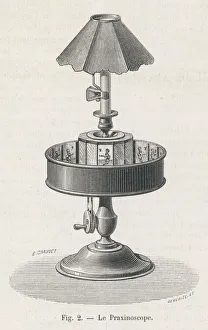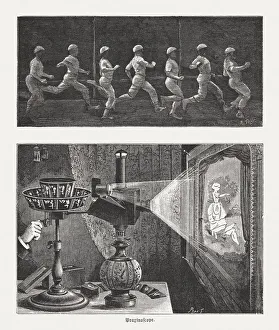Praxinoscope Collection
The praxinoscope, invented by Emile Reynaud in 1877, revolutionized the world of optical illusions and animation
All Professionally Made to Order for Quick Shipping
The praxinoscope, invented by Emile Reynaud in 1877, revolutionized the world of optical illusions and animation. This ingenious device, also known as the "Projecting Praxinoscope" or "Reynaud Praxinoscope, " allowed viewers to witness moving images with incredible precision. With its unique design featuring a roll of images placed inside a mirror cylinder, the praxinoscope created an illusion of motion when spun. It was truly a marvel of its time, captivating audiences with its ability to bring still pictures to life. Emile Reynaud's contribution to this field didn't stop there. He went on to create the famous "Praxinoscope Theatre, " an apparatus that enhanced the viewing experience even further. This innovation allowed multiple people to enjoy animated scenes simultaneously, making it a precursor to modern cinema. The impact of the praxinoscope extended beyond entertainment; it delved into scientific exploration as well. The concept behind this invention highlighted how our eyes perceive and retain visual impressions over time – what is now known as persistence of vision. An anonymous illustration from 1925 beautifully captures this idea and showcases the significance of the praxinoscope in understanding human perception. Wood engravings published in 1888 depicted another fascinating combination: chronophotography and the praxinoscope working hand in hand. These illustrations showcased a running man frozen at different moments captured through chronophotography techniques and then brought back to life using the magic of the praxinoscope. Emile Reynaud's creative genius didn't end with just one invention; he continued his groundbreaking work with projects like Projecting Zootrope and Optical Theatre. His contributions solidified him as a prominent figure in animation history. Today, we owe much gratitude to Emile Reynaud for his pioneering spirit and dedication towards bringing motion pictures into existence through inventions like the praxinoscope.
















